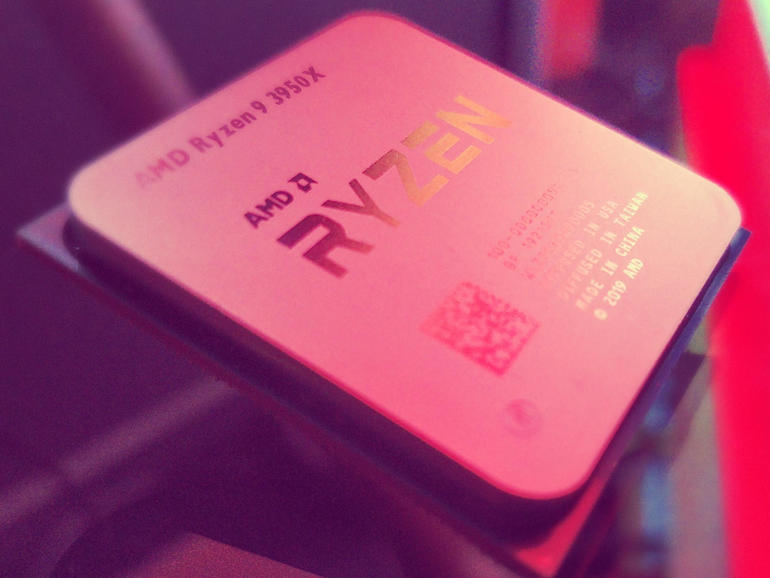The advantages of AMD and TSMC's 7nm production process are on full display with the newly-announced CPU.
AMD announced the 12- and 16-core versions of the third-generation Ryzen platform Monday night at E3 2019, addressing the conspicuous absence of the CPUs during the reveal at Computex 2019 in Taiwan last month.
The Ryzen 9 3950X is a 16-core / 32-thread CPU running at 3.5 GHz base / 4.7 GHz turbo, with 8 MB L2 and 64 MB L3 cache, while the Ryzen 9 3900X is a 12-core / 24-thread CPU at a 3.8 GHz base / 4.6 GHz turbo, with 6 MB L2 and 64 MB L3 cache. Both operate at a 105W TDP, and provide 24 PCI 4.0 lanes.
The 3950X retails for $749, with the 3900X retailing for $499. The 3950X is anticipated in September, while other third-generation Ryzen processors will be available starting July 7.
ZDNet's Adrian Kingsley-Hughes notes that the 3950X packs in "the highest core count for a desktop processor aimed at a mainstream audience." AMD's previous-generation Threadripper with a 16-core / 32-thread configuration runs at 180W TDP, while Intel's comparable CPU has a 165W TDP.
SEE: Vendor risk management: A guide for IT leaders (free PDF) (TechRepublic)
The lower TDP requirements are made possible through the use of a 7nm manufacturing process—by shrinking the manufacturing process, it is possible to run at the same clock speeds while using less power, or to increase clock speeds while using the same amount of power. AMD CPUs are manufactured under contract by TSMC.
Previously, at Computex AMD CEO Lisa Su touted the Zen 2 architecture—used in the third-generation Ryzen CPUs—as doubling floating point performance and doubling the CPU cache compared to Zen 1, as well as delivering 15% more instructions per cycle (IPC).
The third-generation Ryzen platform also brings support for PCIe 4.0, providing double the speed of PCIe 3.0. First-generation SSDs using PCIe 4.0 were also spotted at Computex, with currently-available controllers limited to about 5 GB/sec speeds, though a PCIe 4.0 x4 SSD would be capable of roughly 8 GB/sec, with sufficient caching and controller advancements.
For performance computing, Intel's competing offerings do not quite stack up, as their transition to smaller manufacturing processes has been plagued with complications. Intel did showcase 10nm CPUs at Computex, though these max out at 35W TDP designs intended for higher-power notebook PCs and all-in-one systems.
For more, check out "AMD, Samsung forge graphics processor partnership, aims to expand Radeon to mobile devices" at ZDNet, and "AMD RX Radeon 5700 XT 'Navi' card costs $449, ships July 11" at CNET.
Also see
- 3D printing: A cheat sheet (TechRepublic)
- Five ways to upgrade your Raspberry Pi (TechRepublic download)
- Flash storage: A guide for IT pros (Tech Pro Research)
- How to securely erase hard drives (HDDs) and solid state drives (SSDs) (ZDNet)
- Best 2-in-1 laptops, convertibles, and hybrid laptops for business 2018 (ZDNet)
- Best cell phone trade-in options for iPhones and Android phones (CNET)
- Clean out junk files in Windows 7, 8.1, and 10 (Download.com)
- Raspberry Pi: More must-read coverage (TechRepublic on Flipboard)

amd-ryzen-9350x.jpg











